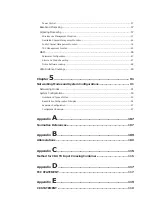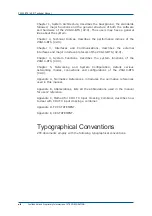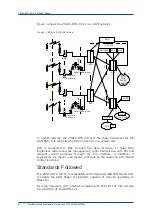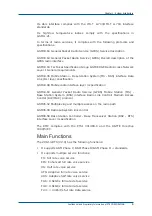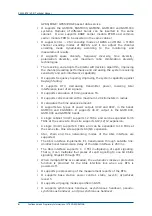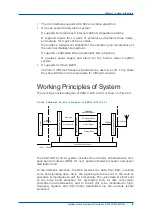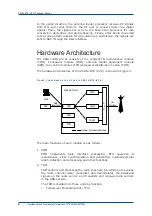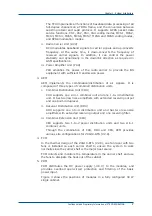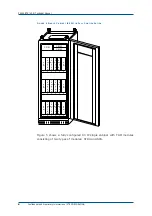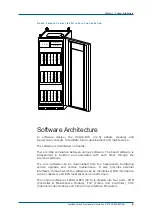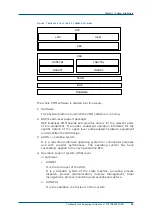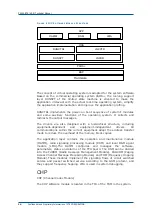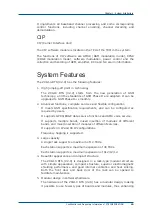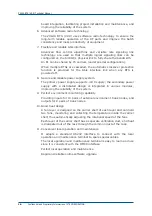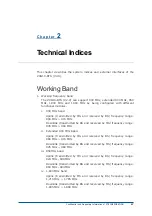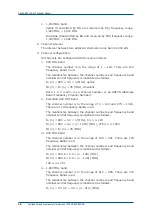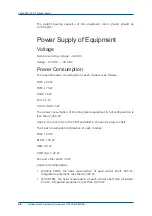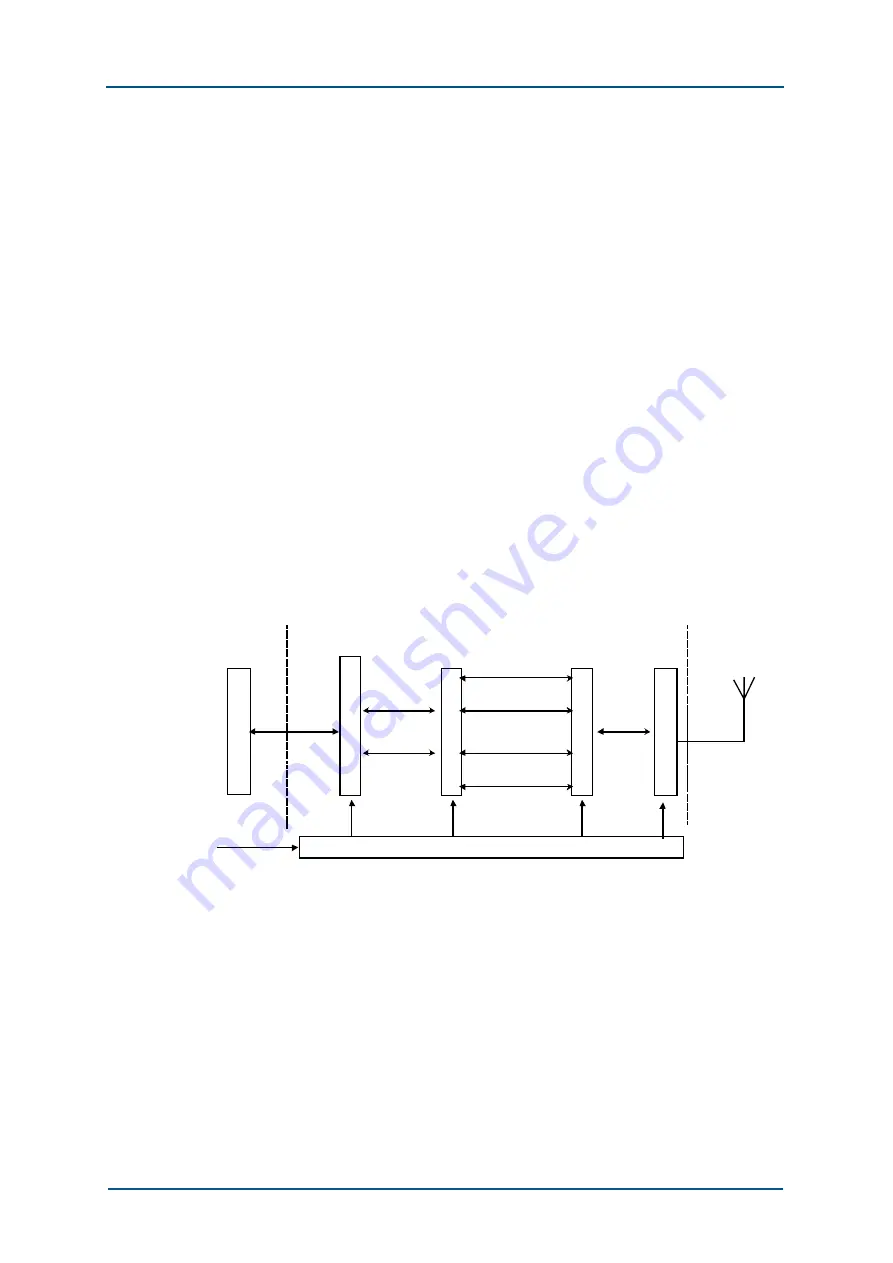
Chapter 1 - System Architecture
Confidential and Proprietary Information of ZTE CORPORATION
5
The Um interface supports A51/A52 encryption algorithm.
It has an overall timely alarm system.
It supports fan alarms and internal cabinet temperature alarms.
It supports inputs for 10 pairs of external environment trunk nodes,
and outputs for 2 pairs of trunk nodes.
It provides a transparent channel for the operation and maintenance of
the external intelligent equipment.
It supports unattended BS and automatic alarm function.
It provides power supply and alarm for the built-in tower amplifier
system.
It supports Common BCCH.
Carriers of different frequency bands can be used in a cell. They share
the same BCCH and are responsible for different services.
Working Principles of System
The working principle diagram of ZXG10-BTS (V2.9) is shown in Figure 2.
F
I G U R E
2
W
O R K I N G
P
R I N C I P L E
D
I A G R A M O F
Z X G 1 0 - B T S ( V 2 . 9 )
C
ont
ro
lle
r &
M
ain
te
na
nc
e U
nit
Ba
se
ba
nd
Pr
oc
esso
r
RF
U
nit
B
S
C
Abis
Interface
Data Link
System Clock
Baseband
Modulated Signal
RF Demodulation
Signal
Control Signal
System Clock
RF Signal
Power Distribution Unit
-48V
or
+24VDC
A
nt
en
na
F
eed
er
P
ro
ces
so
r
Um Interface
The ZXG10-BTS (V2.9) system includes the controller & maintenance unit,
base band processor (BBP), RF unit, antenna feeder processor and power
distribution unit.
In the downlink direction, the BTS receives the data from BSC, including
voice and signaling data. Here, the signaling data are sent to the control,
operation & maintenance unit for processing. The voice data are first sent
to the base band processor for processing such as rate conversion,
encryption and interleaving, sent to the RF unit to be modulated to high-
frequency signals, and then finally transmitted via the antenna feeder
processor.
Summary of Contents for ZXG10-BTS
Page 4: ...This page is intentionally blank ...
Page 8: ...Figures 121 Tables 123 ...
Page 9: ...This page is intentionally blank ...
Page 10: ......

